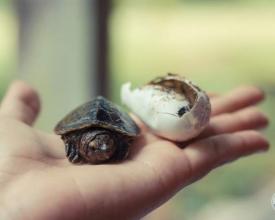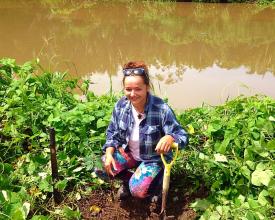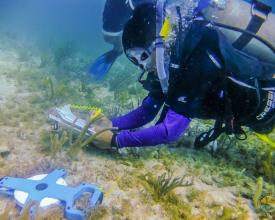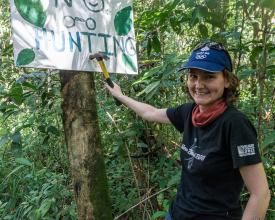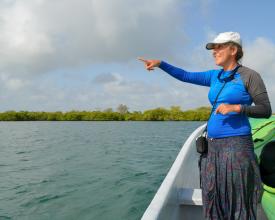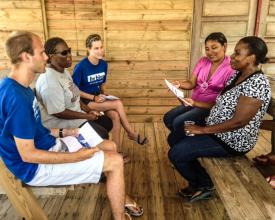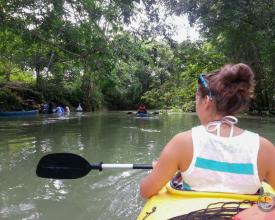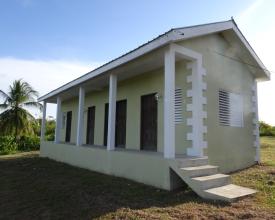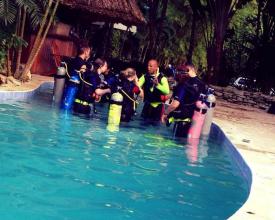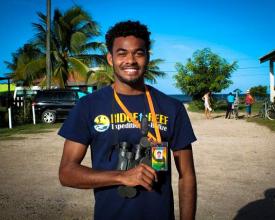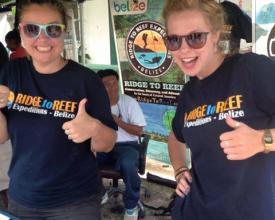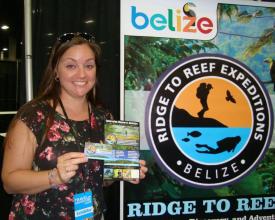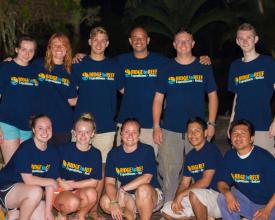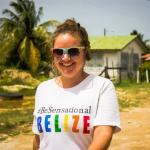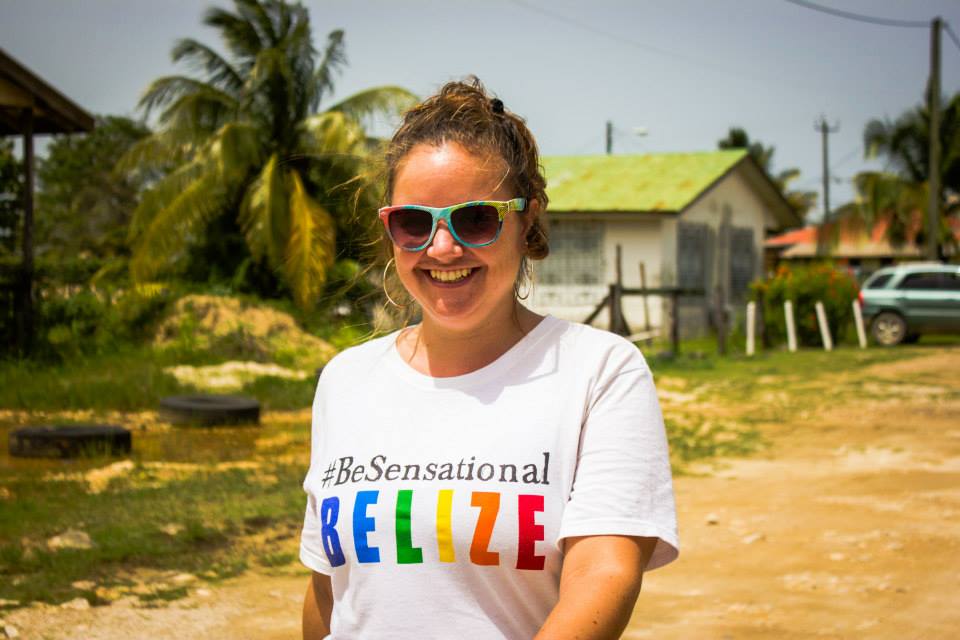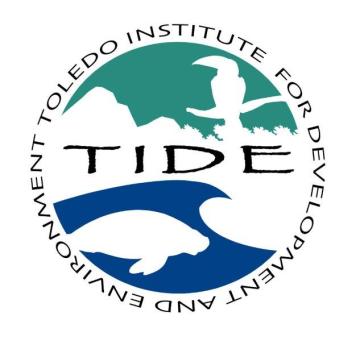
Improving financial sustainability through conservation based tourism in protected areas in Belize
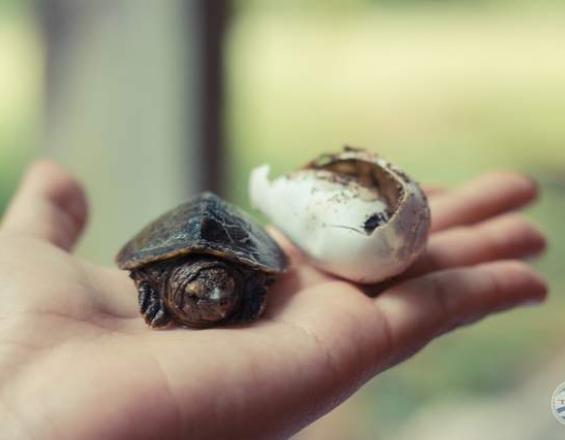
The Toledo Institute for Development and Environment (TIDE) manages and co-manages 160,000 acres of land and seascape in southern Belize, fostering community participation in natural resource management. TIDE identified an opportunity to diversity funding and become more financially sustainable, in the face of increasing demand for conservation and development programs. A pay-to-participate program, Ridge to Reef Expeditions (R2R), was launched in 2014. R2R engages different sectors of the travel market in TIDE’s work, through tourism based conservation volunteering activities. This has a three-fold benefit. 1) Participants pay a fee, and all profits are donated to TIDE. R2R has already contributed $30,000 USD to TIDE. 2) Volunteer fees offset some of the costs of TIDE, by covering the costs of the activities they take part in. 3) The program creates economic opportunities locally for guides and service providers within the tourism industry.
Context
Challenges addressed
Social: There is a high population of graduates/soon to be graduates in Belize, so unemployment and pressure on resources is increasing. R2R is creating employment opportunities and supporting TIDE’s community development and livelihood programs.
Economic: There are few economic opportunities within the Toledo district, and many business struggle to survive. With increasing unemployment of youths, R2R is bringing sustainable employment and tourism dollars to the area.
Environmental: Climate change, alongside pressures of social and economic challenges, mean there is increasing pressure on natural resources and ecosystem services in Belize. R2R allows TIDE to continue/expand its current environmental programs to protect these resources into the future. These benefit the environment and community through sustainable fisheries, stable and clean rivers, coastal protection, and healthy ecosystems for eco-tourism.
Location
Process
Summary of the process
Without the success of all four building blocks, the R2R program would not be possible.
Developing program infrastructure and capacity building are essential in planning and delivering high quality, marketable, programs to participants and potential volunteers.
Building business relationships is crucial in ensuring that potential volunteers are aware of the programs offered and to generate bookings.
Developing volunteer programs is essential to knowing what infrastructure, staffing requirements, and in knowing what can be offered to visiting groups. At the same time, developing programs relies completely upon how they will be marketed, strong business relationships, and ensure how staff’s capacity can meet the program’s needs.
R2R has fully invested into each of these building blocks from its conception. Without one, the others would not be possible, and the program would not be successful. For example, building accommodation that can host 100 students would be pointless without building relationships to recruit volunteers, having trained staff to ensure proper functionality, and having conservation programs for those students to participate in.
Building Blocks
Designing volunteer projects by identifying organisational needs at TIDE and interests of potential participants to ensure maximum benefit to both parties.
One of the key components that makes the R2R experience unique, is that volunteers participate in the hands-on conservation activities of TIDE. It isn’t just a learning experience, but a way for every volunteer to contribute. Thus, volunteer programs are carefully planned with the different teams at TIDE to ensure that participants are fulfilling a need, as well as gaining the experience they seek.
There are two ways this is done. The first, is when interested participants or groups have a particular interest in mind. In this instance, the R2R team discusses options with the relevant TIDE personnel, to identify projects that are required by TIDE, that will fulfil the groups interests. The second method used to achieve this, is to plan projects before identifying the participants. On a regular basis, the R2R meets with different TIDE teams to discuss future needs, and identify any programs that would be suitable for volunteer participation. These programs are then proposed to new contacts and partner agents.
The key thing, is to always ensure that participants have a great and enriching experience, in a safe environment, whilst helping TIDE to progress with its mission.
Enabling factors
The key enabling factor to designing volunteer programs, is the full support and co-operation of the TIDE team. Steps are taken to ensure that all TIDE staff understand the importance of the R2R program in TIDE’s future, and cooperate in the program planning and implementation stages.
It is also important that TIDE has a clear mission, so that when designing volunteer programs, it is easy to identify where participants can assist. The TIDE strategic plan and ongoing work plans are therefore an important tool in this process.
Lesson learned
The key challenge in implementing this building block, is uncertainty in participant numbers and environmental conditions.
Unless R2R reaches booking capacity, there is a risk that activities identified by TIDE as something R2R can carry out, may not proceed. This has so far been avoided by only identifying programs for R2R that are not critical to TIDE’s mission, but rather enhance it. For example, a crocodile program is in development, that will help protected areas management at TIDE and in wider Belize, but isn’t an immediate priority in TIDE’s strategic plan. Thus, if this is advertised but doesn’t go ahead through R2R, TIDE has the option of carrying out this activity at a later date independently.
Environmental conditions are harder to avoid, and certainly impact the program offered. For example, if a group arrives to take part in marine surveys, but ocean conditions are unfavorable, then alternate activities are arranged. To manage this, it is made clear upon booking a program, that activities are subject to local weather conditions, and a ‘plan B’ is always in place.
Development of facilities, equipment, and organisational protocols, so that TIDE is fully prepared to host visiting groups.
In order to host volunteers, the necessary physical and organizational infrastructure has to be in place. This includes, but is not limited to: accommodation; transportation; science equipment such as SCUBA gear, binoculars, and protective wear; health and safety equipment at all fieldsites; office equipment such as laptops and cameras; health and safety procedures, risk assessments and emergency plans; storage facilities; insurance policies; household and kitchen equipment.
For the R2R program, this process started two years prior to the program launch, when TIDE did an inventory of TIDE assets that could be utilized by future R2R groups. Where there were gaps, TIDE sought funding to better prepare for visiting groups. TIDE and R2R continue to invest in further infrastructure developments, for example in 2018 a new field station is planned that will open another of TIDE’s areas to visitors.
The key thing with this building block is to continue evaluating what infrastructure is in place, can currently be offered to groups, and what is needed for potential future groups. It is also important to review how effective these investments are. For example, what is the return on investment for more accommodation, larger vehicles, etc. Knowing this helps guide future investments.
Enabling factors
The most important enabling factor to ensure that infrastructure development is successful, was good planning. It is important to anticipate how the program will develop in the future, and invest accordingly. For example, what groups are expected? Are we prepared and equipped to host them?
Another important enabling factor for R2R, is that TIDE has a good reputation for implementing pragmatic programs. The current climate of NGO funding is favorable to those seeking financial sustainability, so R2R has received grants to support its development.
Lesson learned
Whilst R2R was developed with careful planning, it still faces challenges as it continues to develop. In particular, it was found that the intended target market is not now R2R’s largest portion of participants. It was anticipated that the majority of participants would be students looking to enhance their resume through fieldwork experience. The reality, is that some the more popular programs are those for university study abroad programs, families, and for individuals of all ages looking to ‘vacation with purpose’.
R2R has still managed to adapt gradually over time to these new groups, however some investments may have been made slightly differently from the off-set had more information been available at the time. For example, brand new SCUBA diving equipment was purchased in 2014 when R2R was anticipating a heavy focus on marine programming, however due to other factors, few groups have used this equipment to date. SCUBA is still an activity that is predicted to increase in the future, however the initial investment in 2014 was perhaps premature.
Providing capacity building opportunities to new and existing staff so that the team is fully qualified to deliver the R2R program.
Capacity building has been an important component of developing the R2R program. Prior to this program, TIDE had one tour guide on staff, and a number of ‘community researchers’, who are trained to carry out part time research and monitoring work.
With the program starting small and growing gradually, it was impossible to hire a full staff of fully qualified staff from the off-set, so R2R invested in those staff already working with TIDE to provide additional employment opportunities for them.
Since inception, capacity building amongst staff has continued in an effort to continually ensure that participants have a great experience with knowledgeable, professional staff. This has included providing SCUBA training, tour guide training, science training, marketing training, accounting training, and health and safety training.
Volunteer safety is considered priority, so staff undertake regular health and safety training, and follow risk assessment and emergency procedures set out by R2R.
Enabling factors
TIDE already had a number of trusted community researchers, who were available and willing to partake in training opportunities and then work on the R2R team. By providing training to individuals that were already known to the organization, R2R ensured it was investing in enthusiastic people that are passionate about the work.
Another important thing is to plan ahead for training requirements. Most participants book in advance, so R2R has been able to ensure that its staff were adequately trained well in advance.
Lesson learned
One of the major challenges with implementing this building block, has been staff retention once trained.
Sometimes, training was provided to individuals so that they can better serve R2R, however due to R2R not running at capacity, only part time work can be provided. Some individuals then seek full time employment elsewhere, and are unavailable when R2R needs them to assist with groups. On the one hand, R2R and TIDE are proud to support young people moving into full time employment, however at the same time it leaves the program without the staff it needs.
Since inception, R2R has tried to reduce losses on investment, by requiring those receiving training to contribute towards training costs through salary deductions. This has ensured staff are retained within the program for a longer period of time, but the challenge is still faced.
Because R2R offers a range of programs, from marine, to terrestrial, to community, it hasn’t been practical to build the capacity of just one person. However, for programs that perhaps have a narrower range of programming, this may work.
Marketing and building business relationships
This building block is crucial in ensuring R2R is successful in the long term future.
A variety of marketing strategies are used to market R2R. These include a website, social media platforms, merchandise, printed flyers and brochures, attendance at national and international travel trade events and educational travel shows, email marketing, marketing through TIDE, and hosting familiarization tours.
Initially, it was thought that R2R would attract mainly students wanting to enhance their resume. However, it was found that marketing costs associated with finding each individual participant were high. Now, the primary focus is on partnering with universities and travel planners who organize group trips.
R2R seeks to work with partners who may be initially costly to acquire, but who then provide a regular stream of participants. This includes universities who send one large group per year, and travel agents who may send five groups a year to take part in the program. Over time, building these relationships will mean that marketing costs will be reduced, and the focus will be on retaining those partnerships.
To date, R2R has formed excellent relationships with its partner agents, and continually strives to improve the services provided to ensure long term commitments from them.
Enabling factors
An important thing has been to actively invest in marketing materials and events, from printing brochures to attending international trade events – in order to engage the audience, it is crucial to have professional materials that promote the quality of service that is provided.
Another important condition is to have someone whose focus it is to develop and market R2R programs. TIDE identified the need to have a full time member of staff for R2R in 2014, and invested accordingly, to ensure the responsibility did not fall on existing staff.
Lesson learned
Since 2014, marketing efforts were shifted, from focusing on university students, to focusing on study abroad planners, and travel agents. This was due to the costly nature of recruiting individual students, compared to the better return on investment generated from forming long term partnerships.
This has had its own consequences on the programming offered to participants. Universities and travel agents require much more structured schedules than individual students, so now R2R has less flexibility when it comes to programming. It is unable to go to the assistance of TIDE, should a last-minute priority project present itself. It does, however, allow for longer term projects to be facilitated through R2R. For example, R2R is now doing ongoing research on the manatee population in the Port Honduras Marine Reserve, with 3 – 5 groups per year ensuring that this continues.
For others wishing to replicate this program, it is advised that you carefully plan who your target market is, and devise the best strategy to reach them effectively, as early as possible.
Impacts
To date, 250 volunteers have participated in R2R. Revenue is reinvested in infrastructure, capacity building, and marketing, and from 2016, $30,000 USD has been donated to TIDE. The program is currently running at 10 – 20% occupancy. Investment has been largely supported through grant funding.
R2R has created three permanent jobs, and part time opportunities for guides, boat captains, cooks and service providers. Spending on local services and tours, and in shops and restaurants has increased. Analysis of a 2014 program estimated that a group of seven participants contributed $25,000 USD to the local economy.
R2R participants offset some costs incurred by TIDE. With current occupancy, TIDE cannot rely on this for priority projects, but with program growth, it will become significant.
In 2019, for the first time R2R will host international groups that will subsidize local groups, so Belizean students have opportunities to experience R2R.
R2R participants have contributed to many conservation programs in TIDE protected areas. These include tagging a Hawksbill turtle, reforestation, community livelihood development, and manatee research, all of which benefitted from, or would not be possible without, volunteer participation.
Beneficiaries
Direct: Those receiving employment, service providers, and TIDE.
Indirect: Beneficiaries of TIDE programming: The ecosystems and those dependent upon them, e.g. fishers, tourism stakeholders, coastal communities, riverside communities.
Sustainable Development Goals
Story
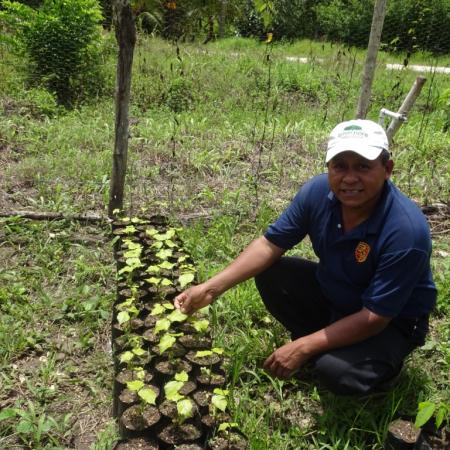
Southern Belize was hit by Hurricane Iris in 2001, which caused major damage to homes, and uprooted hundreds of trees. In the village of San Pedro Columbia, a group of concerned individuals formed the Xucaneb group, which is a Community Based Organization. For over ten years, the group has been replanting trees along the riverbank, in an effort to re-stabilize the banks, ensure a clean river ecosystem, and mitigate against the effects of climate change.
Since 2015, R2R has been supporting the Xucaneb group by sending groups of volunteers to assist in their ongoing efforts. The group is operated on a voluntary basis by its members, but when hosting R2R groups, they receive a stipend for the days spend with participants. In addition to this, R2R purchases the trees from the Xucaneb nursery, to contribute to operational costs. Meals are purchased within the local village, and women display crafts which the volunteers can purchase.
To date, R2R participants have planted over 1000 trees along the Columbia River. A group of students was so inspired during their 2017 visit, that upon returning home they organized fundraising events and were able to purchase a laptop which was later donated to the group.
Mr Hilberto Co, Chairman of the Xucaneb group, says
“We greatly appreciate the help from the Ridge to Reef Program. We are looking forward for the continuous support from the group. It’s harder and harder these days to get the number of volunteers we need—but you made time in your busy schedule to get volunteers together and find ways in which you can help the Xucaneb Group here in the beautiful village of San Pedro Columbia.
Please accept our sincere gratitude for everything your volunteers have done, and how thankful we are by your donation.
Over the past years the Xucaneb group has been planting trees along the San Pedro Columbia River side and with partnership of R2R and TIDE we were able to continue. One tree planted by each volunteer means a lot to our community. These trees planted along the riverbank help with erosion and clean water. Whenever these volunteers come to our village, they will be able to share their stories back to their family and friends. We pray and hope that more volunteers are able to visit and plant more trees in our Belizean soil.
Thank you R2R we appreciate to share our stories and we value these trees that have been planted over the past years in partnership with R2R and TIDE. Once again thank you!!”

